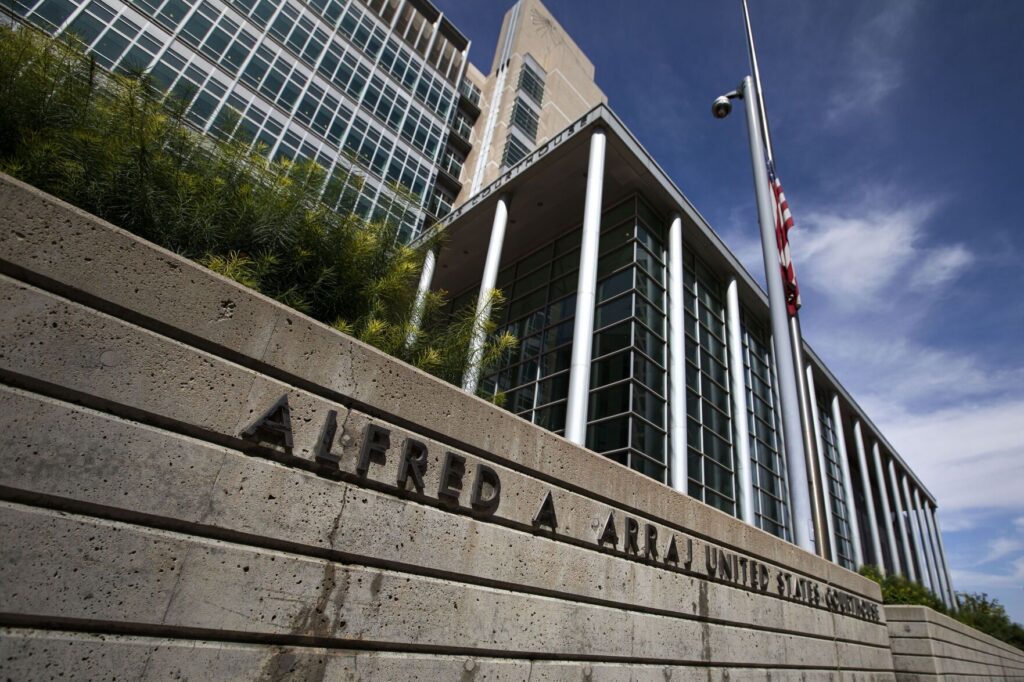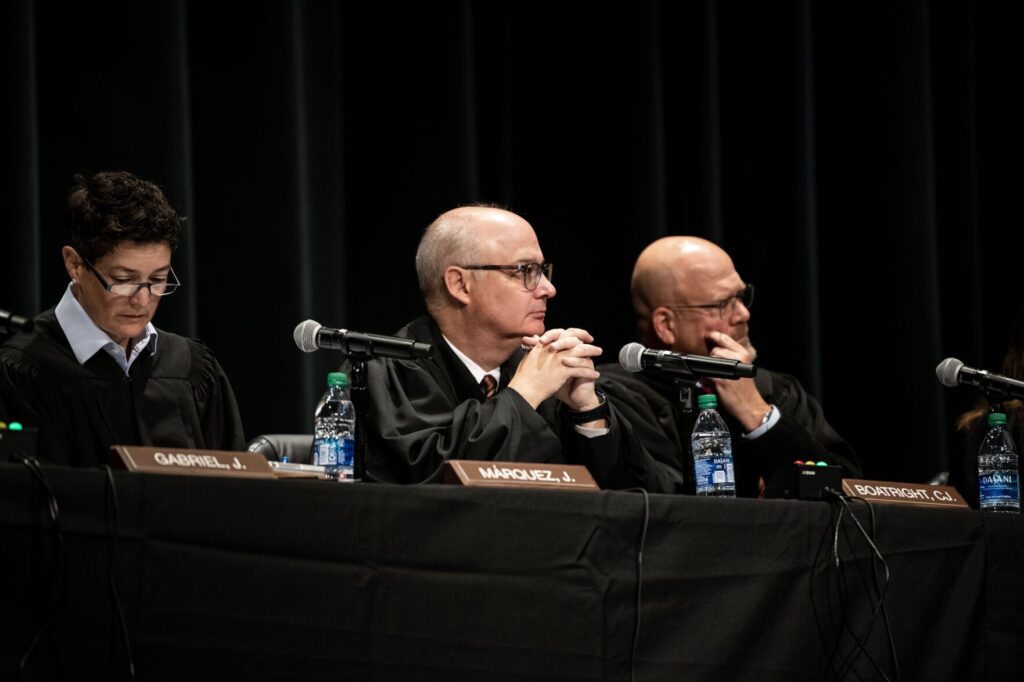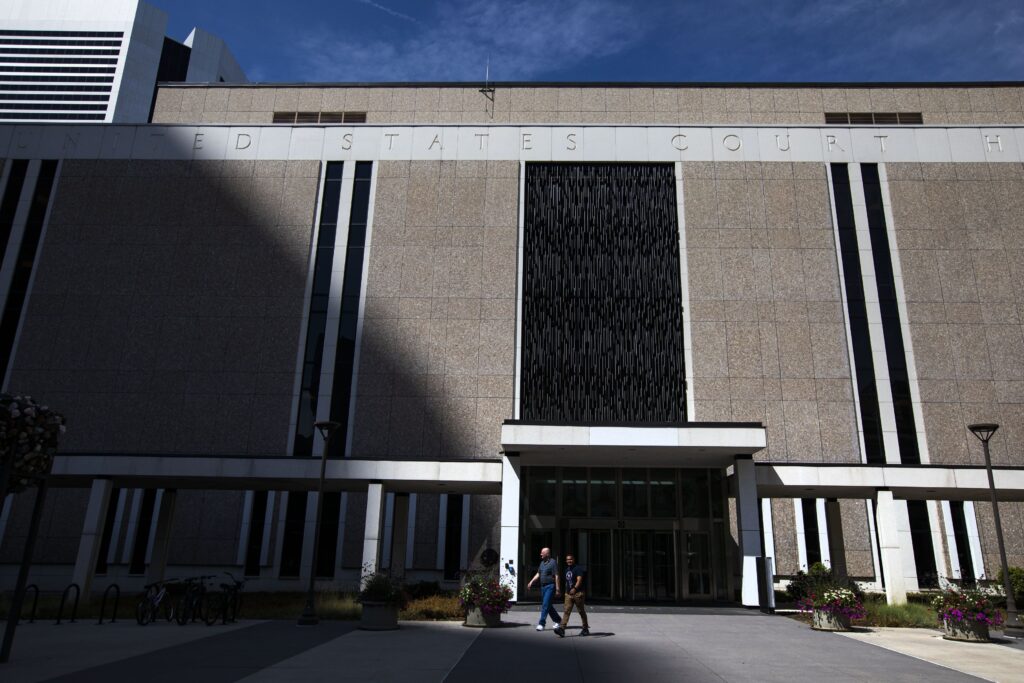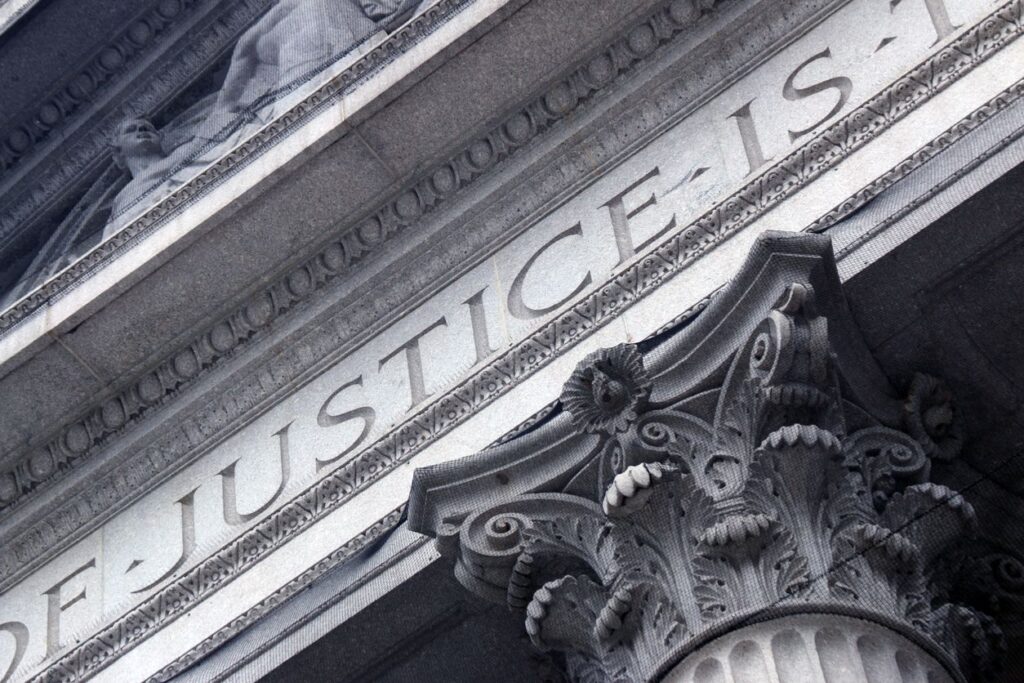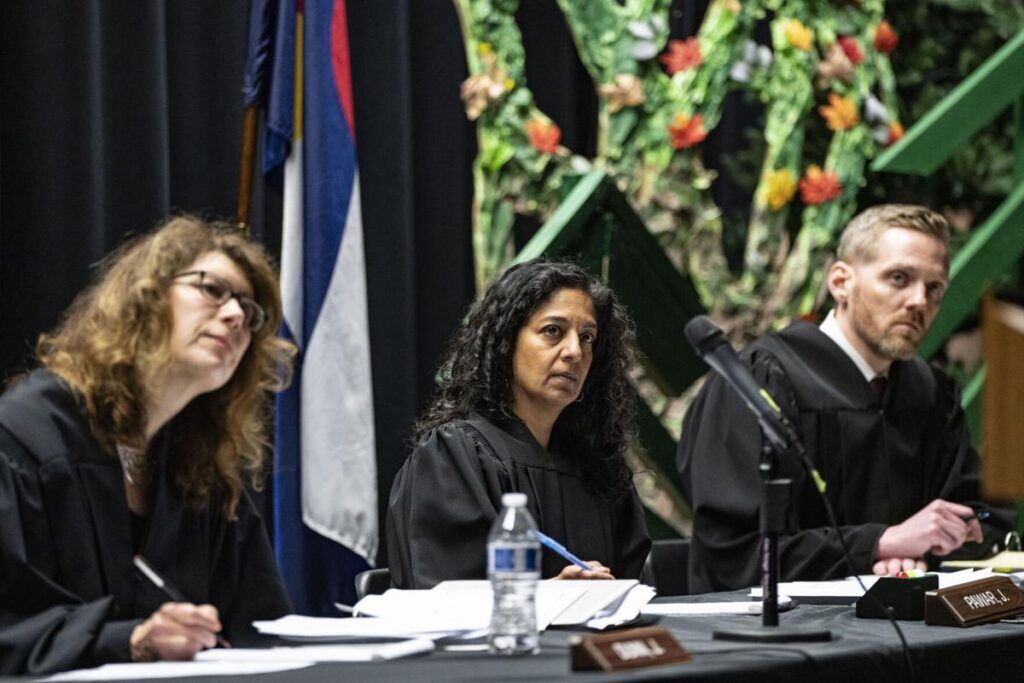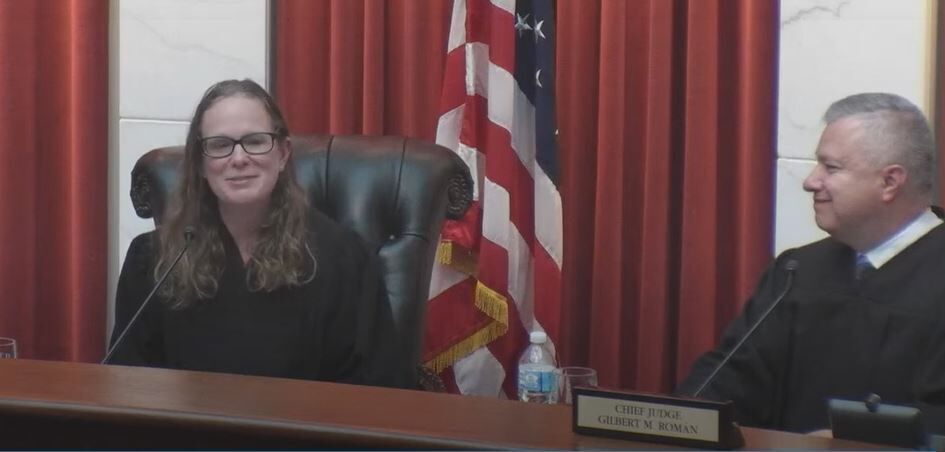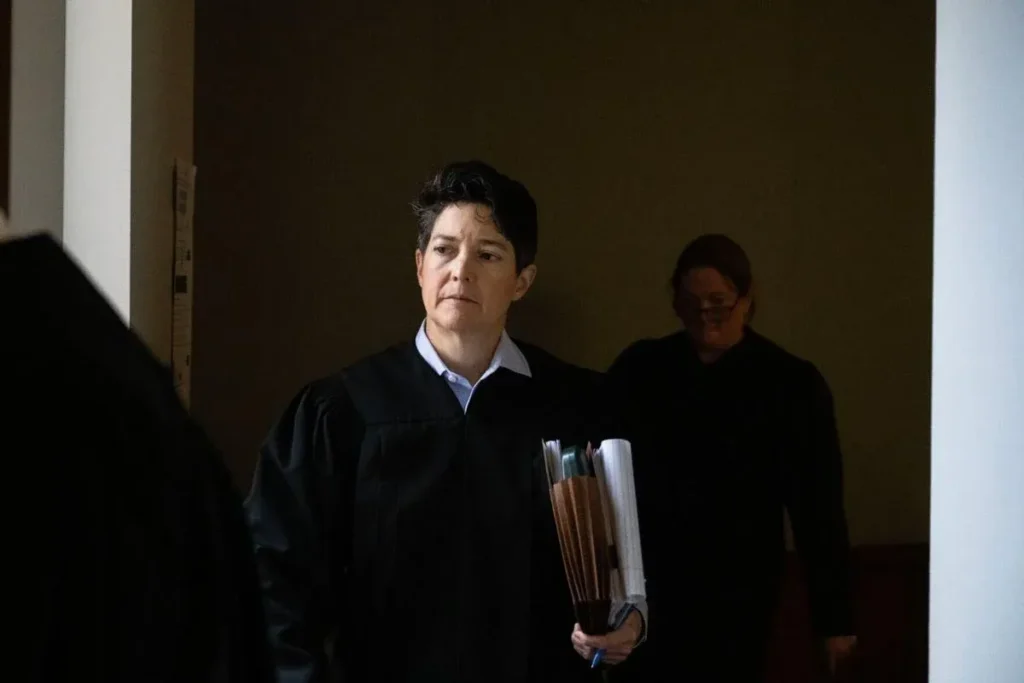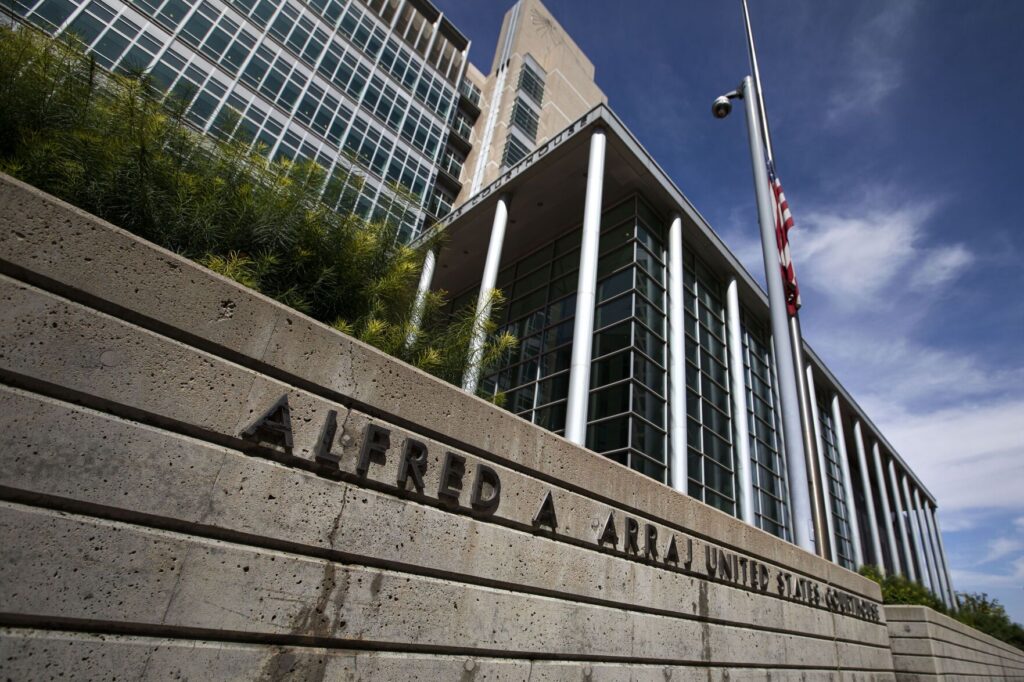Race, emotion, the death penalty: Colorado Supreme Court weighs reversing murder convictions of Sir Mario Owens
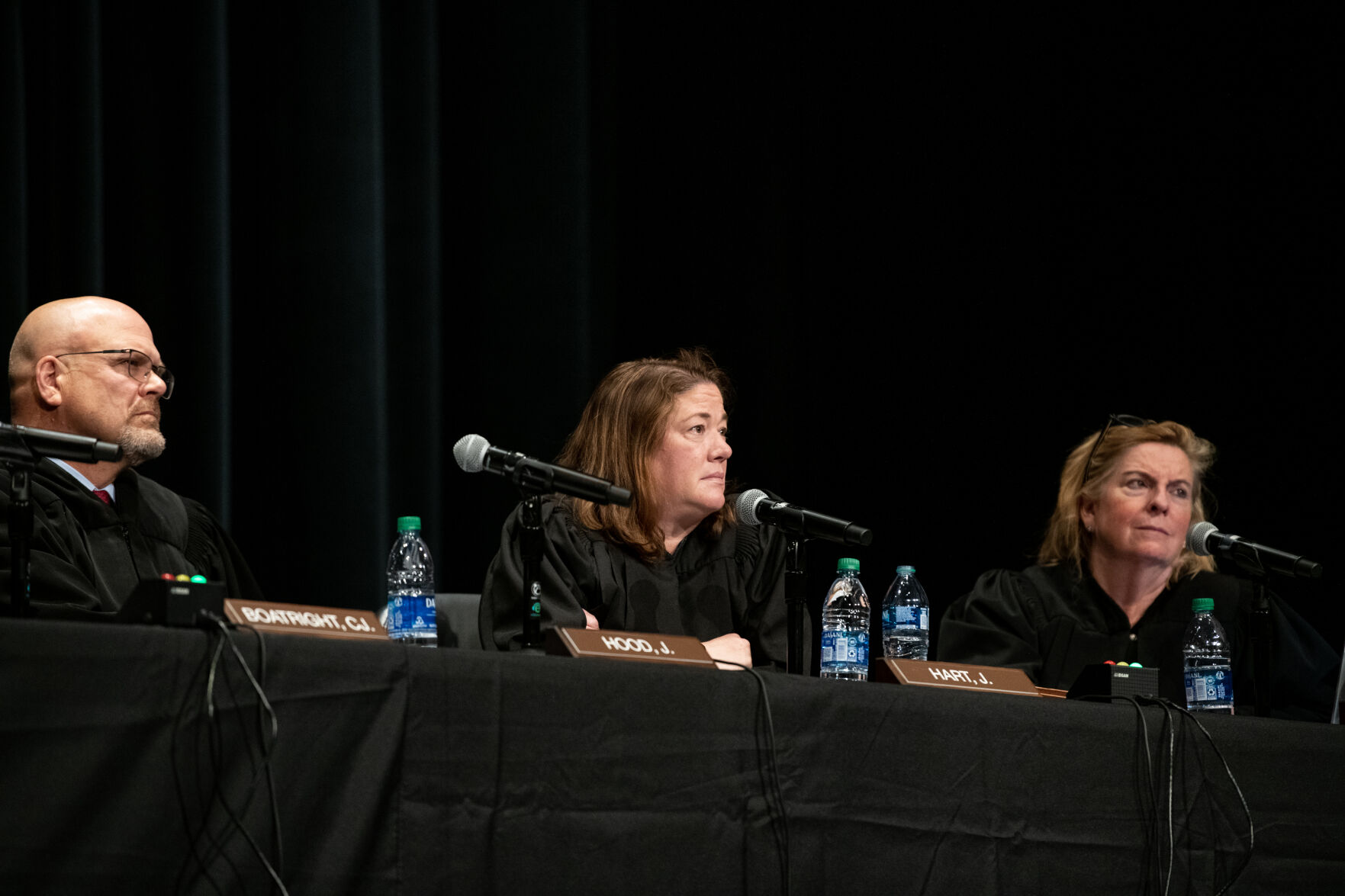
A man convicted of two of the most high-profile murders in recent state history may receive a new trial if the Colorado Supreme Court agrees racial bias in jury selection or improper evidence were factors in the 2008 trial of Sir Mario Owens.
Over several weeks, Arapahoe County prosecutors presented evidence that Owens was responsible for the 2005 murders of Javad Marshall-Fields and Vivian Wolfe in Aurora. Marshall-Fields was a witness to a murder Owens committed the previous summer in Lowry Park and Wolfe was his fiancée.
Jurors found Owens guilty and he received a sentence of death.
On Tuesday, the members of the state Supreme Court heard Owens’ appeal, which was extraordinary in multiple ways. Oral arguments lasted two hours – double the typical length – and the state’s highest court chose to review Owens’ trial for the first time, without any prior decision from the state’s appellate courts in the 15 intervening years.
Although Owens advanced several arguments for overturning his convictions, the justices took two claims particularly seriously: that Arapahoe County prosecutors removed two Black jurors back-to-back because of their race, and that gratuitous and inflammatory evidence prejudiced the jury against Owens.
Specifically, Owens pointed to the prosecution’s dismissal, or “strike,” of a Black juror who indicated he had negative experiences with police for “driving while Black.” Some members of the court worried that to find race was not a factor would give prosecutors the green light to strike people of color from juries because of their lived experiences.
“Under your rule, can a prosecutor strike every juror who says, ‘I’ve had an issue of driving while Black?'” Justice Richard L. Gabriel asked the government. “Is that always race neutral?”
“It could be,” responded First Assistant Attorney General John T. Lee.
In addition to the possibility of throwing out a 15-year-old double murder conviction, the Supreme Court’s decision could foreshadow the justices’ willingness to revise Colorado’s rules addressing racial bias in jury selection. The court has paused consideration of a proposal that would make it harder for prosecutors to strike jurors of color for reasons historically associated with race – like distrust of police.
The justices have elected to wait to take action until after they resolve Owens’ appeal and two other upcoming cases, all of which put prosecutors’ behavior towards jurors of color under a microscope.
Potential race discrimination
In the underlying case, there was circumstantial evidence Owens shot and killed Marshall-Fields and Wolfe so that Marshall-Fields would not testify about Owens’ murder of Gregory Vann at Lowry Park in July 2004. A second perpetrator, Robert Ray, was involved in the two sets of homicides and jurors convicted him as well.
Owens and Ray both sat on death row until the legislature abolished capital punishment in 2020 and Gov. Jared Polis commuted their sentences to life in prison. Marshall-Fields’ mother, Sen. Rhonda Fields, D-Aurora, opposed the repeal of the death penalty.
At the time of the legislature’s abolition, Owens’ direct appeal was pending before the Supreme Court under procedures specific to capital cases. The prosecution and the defense both argued the court continued to have jurisdiction over the case, even with the change in law. The Supreme Court agreed, without elaboration.
Owens’ lawyers claimed to the Supreme Court that prosecutors intentionally struck two Black jurors, leaving an overwhelmingly White jury to convict Owens, who is Black. The prosecutors were John Hower, Ann Tomsic, Emily Warren and Dan Edwards, but it was not clear which lawyer was responsible for each portion of the case.
Under the U.S. Supreme Court’s decades-old decision in Batson v. Kentucky, purposeful racial discrimination in jury selection is unconstitutional and requires a reversal of a defendant’s convictions. At trial, Owens’ lawyers made two “Batson challenges” after the prosecution removed a Black man and a Black woman from the jury.
‘Driving while Black’ and the ‘Black community’
The trial questionnaire asked jurors to indicate whether they had negative experiences with police. The male juror, C.W., said he did on account of “driving while Black.” One of the prosecutors struck C.W. partly because his answer “has a racial overtone.”
“That indicated a distrust of police, and police are wrongfully targeting people of that race and obviously Mr. Owens’ race,” the prosecutor said. Then-District Court Judge Gerald J. Rafferty allowed the prosecution to remove C.W. over the defense’s objection.
Immediately afterward, the prosecution struck the female juror, J.C. Although J.C. wrote on her questionnaire that she “could never vote to impose” the death penalty, her views changed during jury selection and she said she could do it after all. Rafferty found her evolution credible.
However, in what Owens’ lawyers called an “explicitly race-based line of questioning,” one of the prosecutors asked J.C. about the attitudes of “people in the Black community” towards Black defendants. The prosecutor asked if J.C. had “any feelings one way or another about the fact that Mr. Owens is a young Black man charged with a very serious crime?”
J.C. responded that she could be fair. The prosecution dismissed her because of concerns she could not apply the death penalty and Rafferty permitted the strike.
During oral arguments, some members of the Supreme Court were skeptical that the prosecution injected race into C.W.’s dismissal, when he was the one who mentioned race by writing “driving while Black.”
“Once the juror put race in the picture on the juror questionnaire, (the prosecutor is) kind of in a spot,” said Justice Melissa Hart. “So what do you think she should have said differently to disqualify this juror because of the distrust of police, and avoid the race question?”
Owens’ attorney, Mark G. Walta, argued that if prosecutors wanted to know whether jurors were biased against police, they should have outright asked the question. The juror questionnaire, in contrast, only asked about negative experiences with law enforcement, which would receive a disproportionate response from jurors of color.
“I’m not sure what else that is getting at other than bias,” responded Justice Monica M. Márquez.
Gabriel wondered how it could be possible in some circumstances to separate a juror’s distrust of police from their experience as a person of color.
“The juror says, ‘I grew up in the Jim Crow South. Highly segregated. Goodness help me if I’m in a White neighborhood and the police would beat me up. Based on my experience living in the Jim Crow South in a highly segregated world, I have grown up with a great distrust of police,'” he said.
“It would seem,” Gabriel added, “that’s a Batson violation.”
Justice Maria E. Berkenkotter, however, appeared hesitant to endorse letting prosecutors ask entire jury pools to raise their hands if they had a “driving while Black” experience.
“But you had a questionnaire that basically did the same thing,” she observed.
Members of the Supreme Court were more critical of the prosecution’s strike of J.C., and particularly the questioning about how the “Black community” views Black defendants.
“It definitely is indicating some feelings about whether a Black juror can be fair,” said Hart.
“This one is somewhat problematic,” Gabriel agreed. “The prosecutor raised issues about the juror’s race and ‘how do you feel about convicting a Black person.'”
Lee, of the attorney general’s office, conceded the prosecutor’s behavior toward J.C. did not reflect as favorably on the government’s case.
‘You know he’s guilty’
The second issue Owens raised was the amount of evidence, spanning two weeks and 33 witnesses, jurors heard about the murder of Vann in Lowry Park. Rafferty permitted the information in order to provide context and motive for the Marshall-Fields and Wolfe murders, but Owens contended the evidence was only intended to show he was a bad person with bad character.
Some justices were sympathetic to Owens’ argument. Rafferty, the trial judge, “let in a whole lot of evidence on this other case that seemed well beyond what was necessary to establish what the prosecution needed to establish,” Gabriel warned.
Similarly, the Supreme Court was concerned that one prosecution witness blurted out, “You know he’s guilty” on the witness stand, and a member of the prosecution urged jurors to “bring that justice” for Vann, a rhetorical device courts have labeled misconduct in some circumstances.
Justice Carlos A. Samour Jr. is not participating in Owens’ appeal. At the time of Owens’ trial, Samour was a judge in Arapahoe County.
Previously, a trial judge denied postconviction relief to Owens on different grounds in a separate set of proceedings. In 2021, the Court of Appeals upheld Owens’ conviction for the Lowry Park shooting, despite “troubling” information about connections one of Owens’ jurors had to the case.
The case is People v. Owens.



